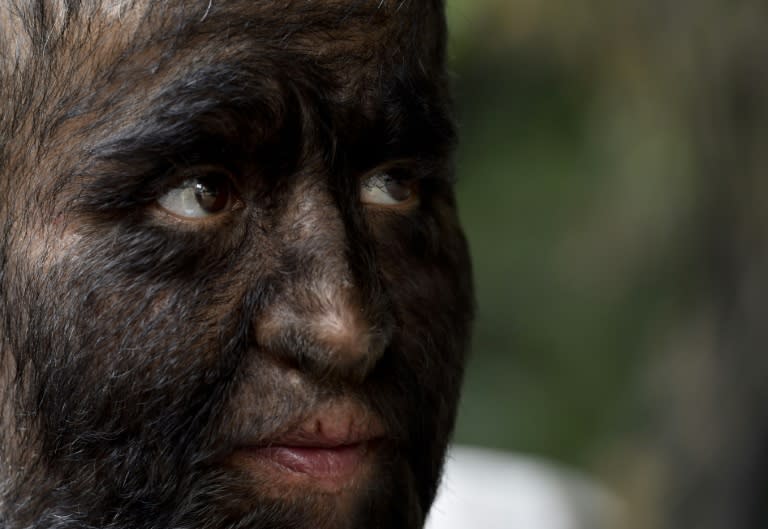Jesus Aceves may never get used to people’s stares, but after decades of alcoholism and a painful career as a circus freak, he has made a decision: He will no longer bury his hair-covered face in his hands. Aceves, a 41-year-old Mexican, suffers from an extremely rare disease called hypertrichosis, also known as “werewolf syndrome” – an unusually heavy growth of hair on the face and body. Only 50 cases of hypertrichosis have been documented to date. Thirteen of them – seven men and six women – are members of the same Mexican family from the city of Loreto in the Central American state of Zacatecas. One of those family members is Aceves, nicknamed “Chuy,” who has struggled with the social consequences of his illness his entire life. “Why did God make me like this? Why am I different?” Aceves says he has been asking himself since he was a child. Over the years, Aceves developed a habit of walking with his hands over his face to avoid the gaze of strangers. As a boy, he dropped out of school, where his classmates mocked him, bullied him and pulled his facial hair. At just 13, he started drinking alcohol and developed an addiction that would haunt him for years. To make a living, he joined a circus along with two cousins who suffer from the same disease, earning about $8 a day. Hypertrichosis, caused by a genetic mutation, has no symptoms other than hair growth. But it makes it very difficult to get a job, go shopping, make friends or find love. “I really don’t understand it. I think it shouldn’t be like this. But unfortunately, it is. They don’t give you opportunities just because you’re different,” Aceves told AFP. – Circus life – In a warm voice, Aceves recounts his difficult life, from his traumatic childhood to his time with the Circus of Horrors in London. A shy smile only crosses his face when he recalls the two occasions on which he shaved off his beard for appearances on television shows – one Japanese and one British. “It was not a very pleasant experience. I didn’t like it. I looked weirder. My face looked like Herman Munster’s – purple or blue,” he said. “I said, ‘No, I’ve been like this all my life, it’s better if I stay like this.'” At first he enjoyed working in the circus, where he met his wife, a clown with whom he has a 13-year-old daughter who also suffers from hypertrichosis. But over the course of more than 20 years, his life as a professional freak took its toll on his self-esteem. “It was damaging to me, but I didn’t realise that until much later,” he said. A few months ago, he started a new career collecting bottles and cardboard on the street for recycling. And although he is estranged from two daughters from previous relationships – who also have hypertrichosis – he says he has finally found peace in his family life. “We were lucky, we are fine. Sometimes it is complicated, but I think if you are honest and decent you can have a good family,” he said. Alongside his new job, Aceves says he has also started a new life. He has given up drinking and no longer tries to hide his face on the street. “I’m tired of feeling uncomfortable. I’m just like everyone else and I need to be happy,” he said. – “Monkey Woman” – Aceves’ struggles are portrayed in the new documentary “Chuy the Wolf Man” by Mexican filmmaker Eva Aridjis, who spent a year and a half with him and his family. For Mexicans, her story inevitably recalls that of Julia Pastrana, an indigenous woman from the northern Mexican state of Sinaloa whose hypertrichosis made her an international sensation in the 19th century. Pastrana was exhibited throughout Europe as “The Monkey Woman” or “The Ugliest Woman in the World.” After she died of complications during childbirth in 1860, her body and that of her baby were embalmed and displayed in special exhibitions for decades. Her remains were not buried until 2013, after a campaign was launched to return them to Mexico from Norway.

